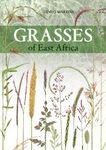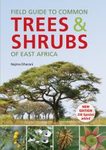Identification Key Monograph
By: Peter Goldblatt(Author), John C Manning(Author)
104 pages, 6 plates with colour photos; 15 b/w line drawings, 48 b/w ddistribution maps
![A Revision of the Southern African Genus Babiana (Iridaceae: Crocoideae) A Revision of the Southern African Genus Babiana (Iridaceae: Crocoideae)]()
Click to have a closer look
About this book
Customer reviews
Related titles
About this book
A member of Iridaceae subfamily Crocoideae, Babiana Ker Gawl. is a genus of some 88 species of southern and central Africa. Although considered relatively well known as a result of G.J. Lewis's (1959) monograph, in which 61 species were recognised, subsequent exploration has resulted in the discovery of many more species. Three new species have been described since 1959, and in 1990 two more were transferred from Antholyza L., a genus differing from Babiana only in floral adaptations for sunbird pollination. Our taxonomic philosophy, strongly oriented toward the biology of the plants, has led us to adopt a narrower species concept than Lewis entertained and this has led to the recognition of more species. The taxonomy of Babiana now requires thorough re-evaluation. Babiana is divided into three sections: the more generalised section Teretifolieae G.J. Lewis; the derived section Babiana with inner bracts divided to the base; and section Antholyzoides Benth. & Hook.f, with bilabiate flowers with clawed tepals and a short perianth tube. Two of the five sections of Lewis's (1959) classification, Acaste and Scariosae, are included in section Babiana, and those species of her section Babiana with inner bracts forked apically, or to the middle, are transferred to section Teretifolieae. The Socotran B. socotrana Hook.f, which differs from all other members of the genus in its trisulcate pollen grains, basic chromosome number of x = 10, and unspecialized seed morphology, has been referred to a new genus, Cyanixia Goldblatt & J.C. Manning. While section Teretifolieae occurs across the entire geographic range of Babiana, section Antholyzoides is restricted to Namaqualand and the adjacent northern edge of the Cape Floristic Region, and section Babiana extends from southern Namaqualand across the Cape Floristic Region to the Eastern Cape Province of South Africa. Babiana shows a pattern of speciation and adaptive radiation in the southern African winter rainfall zone with two centres of diversity, one in section Babiana in the extreme southwest where rainfall is highest, and the other in section Antholyzoides and Teretifolieae in Namaqualand and southwestern Namibia, to the north, which have a semi-arid to arid climate.
Customer Reviews
Identification Key Monograph
By: Peter Goldblatt(Author), John C Manning(Author)
104 pages, 6 plates with colour photos; 15 b/w line drawings, 48 b/w ddistribution maps















































